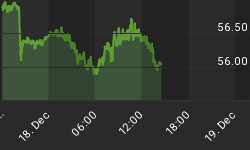It looks like 10 years ago when LTCM was in trouble, last Friday (3/14/2008), JP Morgan and Fed has decided to step in and rescue Bear Stearns. This is worse than LTCM because in order to provide backup to JP Morgan, the Fed had to use a depression-era provision to provide loans which they have not used since the great depression in 1930s, until now. So you know how more serious and important this crisis and bailout are compared to LTCM 10 years ago or S&L crisis 20 years ago.
Then on Sunday, JP Morgan decided to acquire BSC for mere $2 per share. This says a lot about the whole banking industry. It sounds like another Enron, in the sense of wiping out the whole equity of a firm. It basically means the whole banking sector is worthless, maybe even a liability for the society. Because the BSC building is worth around $10, if JP Morgan is only buying the whole company for $2, it must assume a $8 worst case scenario of liability and counterparty risk which JPMorgan will take over from BSC huge derivative positions such as OTC CDS (credit default swap). In other words, the book value of BSC is not only zero if including off-balance sheet items, but actually negative due to its derivative positions. This is way exceed anyone's most pessimistic expectation. At crisis like this, you can pretty much throw balance sheet, book value, asset evaluation, portfolio holdings, even their building into water, only one thing counts and matters: liquidity (cash).
The rumor of BSC running of cash was actually widely circled the week before in the fixed income market, which forced BSC to make a public announcement on Monday (3/10) to ensure the public that their financial situation was solid and their liquidity was sufficient. Were they? Well, for many Wall St. experienced veterans, who smelled more blood coming, this actually meant that BSC was in big trouble. Pretty soon, any trades involving BSC got reviewed, scrutinized, rewound and cancelled. Hedge funds, mutual funds, and capital management companies stopped using BSC brokerage service to execute their trades, existing customers tried to cash out their holdings and withdraw all their funds at BSC. This is a typical run on the bank like 1930s. At that time, the small and local banks were running out of cash due to withdrawal by farmers, which spread to large and national banks, all the way to the Central Bank of the United States.
Bear Stearns is in a worse situation than LTCM in the sense that clients of hedge funds have many limitations to withdraw their capital, and they can not withdraw at the time they want, which buys hedge funds time to work out the liquidity issue. Also hedge funds can usually deny their withdrawal at any time they want according to legal contracts mutually agreed by both parties. This is why even a big crisis such as LTCM can be easier to be contained, only dealing with a small number of elite investors (set aside the counterparty risk causing investment banks from LTCM derivatives). But in this case, BSC can not stop withdrawal, because it is a bank, even an investment bank (thank God, not a commercial bank). This is why it requires Fed to step in and use a rarely used way to resolve this bank run crisis.
In July 2007, everything was looking so wonderful, blue sky way ahead, and Bernanke even said that the strong US real estate merely reflects the strong US economy at that time. Sure, we took your word for it. Who would have guessed what is happening today? Who would have thought a perfect storm looming only half year later? No wonder George Soros said that this is the worst financial crisis in 60 years.
BSC is only the 5th largest US investment bank, relative small for Fed to rescue and for other bank such as JP Morgan to acquire. What happens if there is a 2nd one coming? This thing never happens alone and once. Fixed income market is in deep fear right now, for example, last Friday, spread of CDS (credit default swap) on Lehman Brothers has widen to 465 basis points, which is at the same level before what happened to Bear Stearns. Even there could be a bear market rally in the banking sector, thanks to the Fed's rescue, but this crisis is far from over. This is only the early inning of the banking crisis. Before it seems like a slow moving train wreck, but during last couple months, it certainly looks like the train is really speeding up. Last several days will definitely be recorded in the history book for the banking industry.















